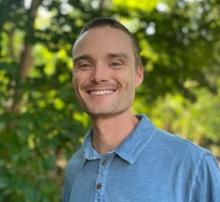Hurricane Ian Team
Hurricane Ian Team

Karim Abdelwahab
Dr. Karim Abdelwahab is a postdoctoral fellow at Johns Hopkins University and is appointed as an Associate Researcher in the Infrastructure Materials Group (IMG) at NIST through the Professional Research Experience Program (PREP). Dr. Abdelwahab is working on the wind damage and rainwater intrusion in buildings project of the Hurricane Ian study where he is responsible for designing and implementing the research program for asphalt shingles with the objective of providing insights on their ability to resist the applied wind-induced uplift forces after experiencing environmental weathering. Dr. Abdelwahab’s previous research experience was in the field of structural engineering, adhesives materials, fiber-reinforced composite materials, large-scale testing, light-frame wood construction, and building science. Dr. Abdelwahab has a B.S. in Civil Engineering from Cairo University, a M.S. degree in Civil Engineering from North Carolina State University, and a Ph.D. in Civil Engineering from Penn State University.

Stefano Biondi
Stefano Biondi is a Professional Research Experience Program (PREP) Associate at NIST. His research focuses on wave-structure interaction, hydrodynamic modeling, and the coastal built environment. At NIST, he contributes to the Hurricane Ian storm surge effects project as a modeling specialist, developing numerical simulations of coastal hydrodynamics and structural performance under extreme storm conditions. Mr. Biondi holds a bachelor’s degree in Civil Engineering and a master’s degree in Hydraulics and Hydrodynamics from the University of Padova, Italy, and he is currently a Ph.D. candidate in Civil and Coastal Engineering at the University of Florida. He has extensive experience in both field measurements and numerical modeling laboratories, integrating experimental data with advanced computational methods to improve understanding of coastal hazard processes.

Tanya Brown-Giammanco
Dr. Tanya M. Brown-Giammanco is NIST’s Disaster and Failure Studies director, leading a multidisciplinary staff responsible for conducting fact-finding field investigations and studies focused on: building and infrastructure failures; successful building and infrastructure performance; evacuation and emergency response systems; and disaster recovery and community resilience. She is also the Acting Chief of NIST's Disaster Impact Reduction Office. Dr. Brown-Giammanco’s research has focused on natural hazards and their effects on buildings and roofing, the development of laboratory testing methodologies, and the development of tools, metrics, and statistical relationships to quantify and explain damage states, to advocate for better building practices and materials. She has a B.S. in atmospheric science and a M.S. in water resources science from the University of Kansas, and a Ph.D. in wind science and engineering from Texas Tech University. She is a faculty associate at Texas Tech University. She supports the management and operations of the Hurricane Ian study, and provides subject matter expertise in the wind damage and rainwater intrusion in buildings project.

David Butry
Dr. David T. Butry is the Chief of the Applied Economics Office within the Engineering Laboratory at NIST. Dr. Butry has experience is in the areas of applied microeconomics and econometrics, with specialization in the fields of natural resource economics, environmental economics, and spatial statistics. He leads research in (1) measuring the benefit-cost performance of life-safety technologies, building codes, and standards; (2) estimating the economic impacts resulting from natural and human-caused hazards; and (3) measuring the return-on-investment of prevention and mitigation activities and community resilience. Dr. Butry is supporting the Hurricane Ian wind damage and rainwater intrusion in buildings project, and is focused on evaluating the prevalence and economic impact of wind-driven rain and water intrusion in residential structures.

Joel Cline
Mr. Joel Cline is the Director of the National Windstorm Impact Reduction Program (NWIRP) at the NIST. He coordinates the research and implementation activities for the four NWIRP agencies – the Federal Emergency Management Agency (FEMA), NIST (lead agency), the National Oceanic and Atmospheric Administration (NOAA), and the National Science Foundation (NSF). Prior to joining NIST, Mr. Cline worked over 30 years at the NOAA/National Weather Service (NWS) with expertise in leading lab project portfolios, applying scientific research, and developing and managing teams. Joel also worked for the Department of Energy to aid the development of wind energy. He previously served as a NOAA co-lead for NWIRP and is part of the Hurricane Maria Team at NIST. He has a B.S. in Meteorology and Computer Science from North Carolina State University and a M.S. in Meteorology & Physical Oceanography from the University of Miami. He leads the emergency communications methods and effectiveness project in the Hurricane Ian study.

Dan Cox
Dr. Dan Cox is a coastal engineer with expertise in coastal wave dynamics, storm surge, sediment transport, coastal structures, and engineering with nature. His recent work includes the physical and numerical modeling of overland flow, sheltering and shielding effects of buildings, flood-borne debris transport, the development of fragility functions to predict flood damage by hurricanes, and the use of mangroves to reduce flood risk. For the Hurricane Ian study, Dr. Cox supports the storm surge effects project and is focused on the measurement and modeling of the impacts of hurricanes storm surge, waves and current on buildings. He has conducted several disaster reconnaissance studies, including a study for the American Society of Civil Engineers of the impacts of Hurricane Ian on the city of Fort Myers Beach. Dr. Cox serves as the chair of two standards committees American Society of Civil Engineers for flood loads (ASCE 7-28 Chapter 5) and flood resistant design (ASCE 24-24). Dr. Cox also holds an appointment as professor in Civil Engineering at Oregon State University.
Nicholas de Toledo
Mr. Nico de Toledo is a wind and coastal hazards researcher in the Structures Group at NIST. His research focuses on the impacts of severe windstorms on critical facilities and infrastructure. His academic background is in geology and coastal erosion. Within the Hurricane Ian project, Mr. de Toledo supports the team with geospatial analysis and writing across projects.

Marc Levitan
Dr. Marc Levitan studies hurricanes and tornadoes, their impacts, and mitigation for the National Windstorm Impact Reduction Program (NWIRP), a multi-agency program whose purpose is to achieve major measurable reductions in the losses of life and property from windstorms. Dr. Levitan served as the first Director (Acting) of NWIRP, from 2015-2018, and is currently its Lead Research Engineer. He headed the National Construction Safety Team (NCST) Technical Investigation of the 2011 Joplin Tornado, and leads implementation for many of the recommendations from that study. Dr. Levitan is a member of the NCST Team investigating Hurricane Maria and its impacts on Puerto Rico. Within the Hurricane Maria Program, his roles include analysis of: the wind environment; the performance of critical facilities such as hospitals and shelters; and damage to the wireless communication system. Dr. Levitan is co-leading the Hurricane Ian study. He is contributing to the storm surge effects project and the wind damage and rainwater intrusion in buildings project.

Aron Newman
Dr. Aron Newman is the Division Chief of the Materials and Structural Systems Division (MSSD) of the Engineering Laboratory (EL). Dr. Newman’s expertise in materials science, including the degradation of materials’ performance, will be leveraged for the Hurricane Ian investigation, especially related to the performance degradation of asphalt shingles and how that impacts water ingress as part of the wind damage and rainwater intrusion in buildings project. Dr. Newman received his Ph.D. 1998 in Materials Science and Engineering from the State University of New York at Stony Brook. Since then, Dr. Newman has served in various technical and management roles addressing materials science challenges.

Yalda Saadat
Dr. Yalda Saadat is an engineer and research scientist in the Applied Economics Office within the Engineering Laboratory. Her expertise encompasses resilience and risk assessment for infrastructure networks, focusing on both pre-disaster evaluations—such as assessing risks from natural hazards like earthquakes—and post-event recovery, particularly in the context of functional recovery of infrastructure systems and the built environment. Dr. Saadat's work also delves into equity analysis, incorporating socioeconomic factors to address challenges in disaster recovery and enhance community resilience. Within the Hurricane Ian study, Dr. Saadat works on the wind damage and rainwater intrusion in buildings project, focusing on assessments of building performance. Additionally, she is one of the primary researchers working on the emergency communications methods and effectiveness project.

Dylan Sanderson
Dr. Dylan Sanderson is an Associate Research Scientist at Johns Hopkins University and a Professional Research Experience Program (PREP) Associate at NIST. His areas of expertise include both coastal engineering and community resilience. Dr. Sanderson is working on the surge project of the Hurricane Ian study where he is responsible for numerical modeling of overland surge, waves, and currents through the built environment. The aim of his work on this project is to better understand how hydrodynamic forces contribute to the damage and failure of structures during hurricanes. Prior to his current appointment, Dr. Sanderson was a National Research Council Postdoctoral Fellow in the Community Resilience Group at NIST. He obtained both his Ph.D. and M.S. degrees in civil engineering from Oregon State University and his B.S degree is in ocean engineering from Texas A&M University. Between his time at Texas A&M and Oregon State University, he worked for the US Army Corps of Engineer’s Research and Development Center (ERDC) in the Coastal and Hydraulics Laboratory.

Don Slinn
Dr. Don Slinn is a Coastal and Mechanical Engineer in the Structures Group at NIST. He has experience in the areas of wind, wave, and storm surge with specializations in the areas of coastal modeling, computational fluid dynamics, littoral processes, and flood mapping. He has worked on projects involving real time forecasting of tropical cyclones, coastal sediment transport, oceanic surface and benthic boundary layers, nearshore circulation, and wave modeling. Prior to joining NIST in 2024, Dr. Slinn worked as an Associate Professor of Coastal and Ocean Engineering for 27 years at the University of Florida and Florida Atlantic University. He is leading the storm surge effects project in the Hurricane Ian study, with the goal of improving the understanding of wind, wave and current forces on coastal buildings and to provide design guidance in determining appropriate national building standards for the coastal built environment to improve resilience for coastal structures during hurricanes. Dr. Slinn is adapting the ADCIRC and SWAN models to include the effects of buildings on the model predictions for waves and surge during tropical cyclones.

Li Piin Sung
Dr. Li Piin Sung is a Research Physicist and Project Leader in the Infrastructure Materials Group of the Materials and Structural Systems Division (MSSD) of the Engineering Laboratory (EL) at the National Institute of Standards and Technology (NIST). Dr. Sung has a B.S. in Physics from Taiwan Normal University (Taipei, Taiwan) and a Ph.D. in Physics from the University of California at Santa Barbara. She is responsible for developing characterization tools, test methods, modeling approaches, and improvement of environmental stress simulation for industrially relevant multi-layer, multi-component polymeric systems used in infrastructure applications. Dr. Sung's main interests are in developing measurement science tools for service life prediction, such as validation studies and material degradation databases, and advances in weathering and durability standards and codes, which are essential for producing innovative materials for resilient infrastructure. From 2008 to 2024, she was the Director and project leader of the NIST/Industry Polymer Surface and Interfaces (PSI) consortium. In this capability, she has taken the leadership and initiative in developing test methods for characterizing scratch resistance using scattering measurement science to articulate industry needs. In the Hurricane Ian study, she provides mentorship of materials related research being conducted in the wind damage and rainwater intrusion in buildings project.
David Webb
Dr. David Webb is an Engineer in the Applied Economics Group (AEO) of the NIST Engineering Laboratory (EL). He has worked on projects involving sustainable buildings, electric vehicle batteries, wildland-urban interface (WUI) fires using various economic and statistical analysis methods. For the Hurricane Ian study, he is leading the wind damage and rainwater intrusion in buildings project and is responsible for the literature review as well as aiding in the preliminary study of remote sensing data and economic and statistical analysis of wind-driven rain impacts to both determine the feasibility of such efforts and performing the final analysis. He may also perform additional work on the development of survey questions and analysis of survey results as needed, and conduct work calculating the economic impacts of water intrusion due to wind-driven rain.
Contacts
-
(301) 975-2822

